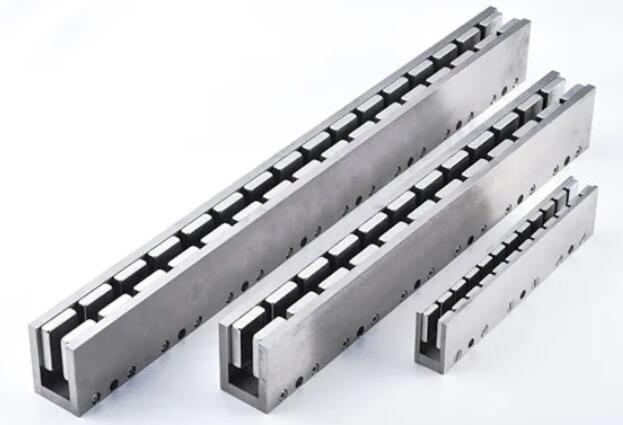
Permanent magnet materials in maglev train
Professional manufacturer Customized Neodymium block Arc Magnet for Motor
Magnetic levitation technology (abbreviated as EML technology or EMS technology) refers to a technology that uses magnetic force to overcome gravity to make objects levitate. The maglev train is a new type of transportation consisting of a non-contact magnetic support, magnetic guidance and drive system. There are mainly superconducting moving maglev trains, normally conductive magnetic attraction high-speed maglev trains, and normally conductive magnetic attraction medium and low speed maglev trains.
Maglev train is a modern high-tech rail transportation tool. It uses electromagnetic force to achieve contactless levitation and guidance between the train and the track, and then uses the electromagnetic force generated by the linear motor to drive the train. The linear motor is a transmission device that directly converts electrical energy into linear motion by expanding a closed magnetic field into an open magnetic field, without any intermediate conversion mechanism. The stator in the linear motor adopts neodymium iron boron permanent magnet material or samarium cobalt permanent magnet material with high magnetic energy product, high remanence and strong coercivity, and the N pole and S pole of the magnet are alternately arranged.

According to the types of electromagnets used in maglev trains, it can be divided into two categories: normally conductive attraction type and superconducting repulsion type.
Normal attracting
Normally conductive attracting magnetic levitation trains use normally conductive magnets and guide rails as the conductive magnets. The air gap sensor is used to adjust the size of the levitation gap between the train and the line. Under normal circumstances, the size of the levitation gap is about 10 mm. The running speed of the train is usually in the range of 300-500 km/h, which is suitable for intercity and suburban transportation.
Superconducting rejection
The superconducting repulsive maglev train uses superconducting magnets and low temperature technology to achieve levitation between the train and the line. The levitation gap is generally about 100mm. This maglev train does not levitate at low speeds. When the speed reaches 100 km/ It floats at h. Its maximum operating speed can reach 1000km/h, but its construction technology and cost are much higher than that of the normally guided magnetic levitation train.
Thank you for reading our article and we hope it can help you to have a better understanding of the most commonly used neodymium motor magnets. If you want to learn more about permanent motor magnets, we would like to advise you to visit BEARHEART Magnets for more information.
We can provide high-quality permanent magnets like neodymium magnets, ferrite magnets and magnetic assembly at a very competitive price. Any inquiries and orders are welcomed.
